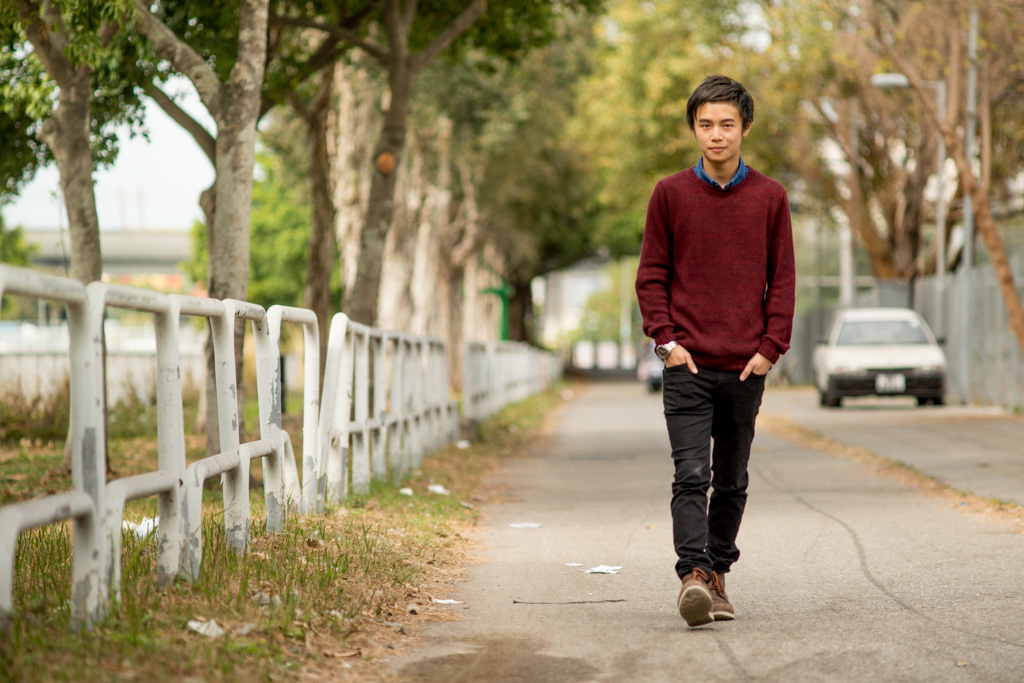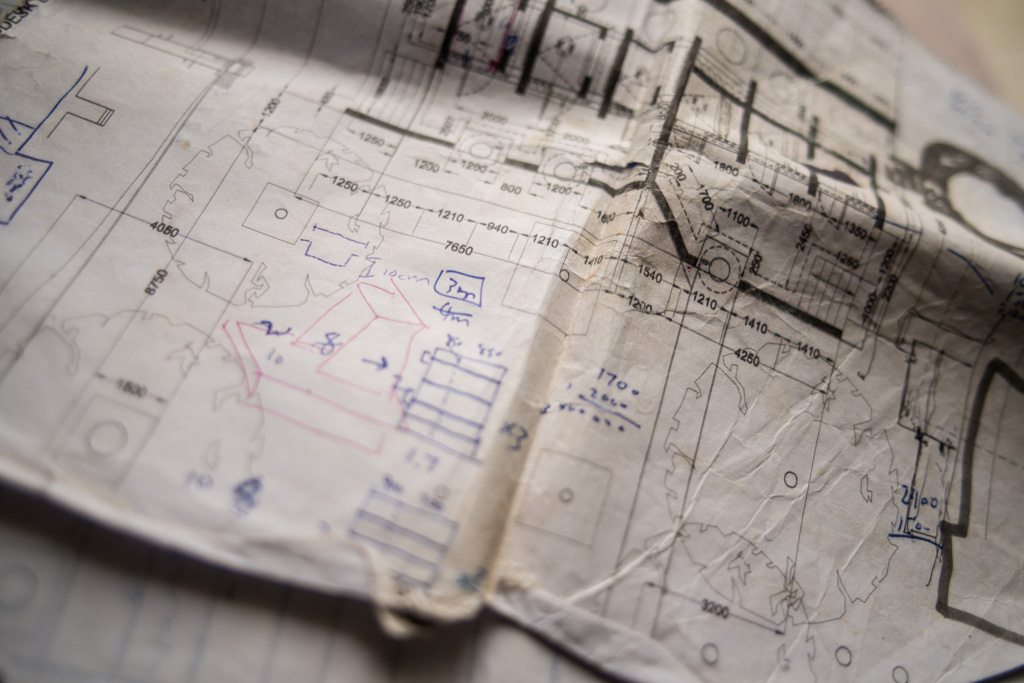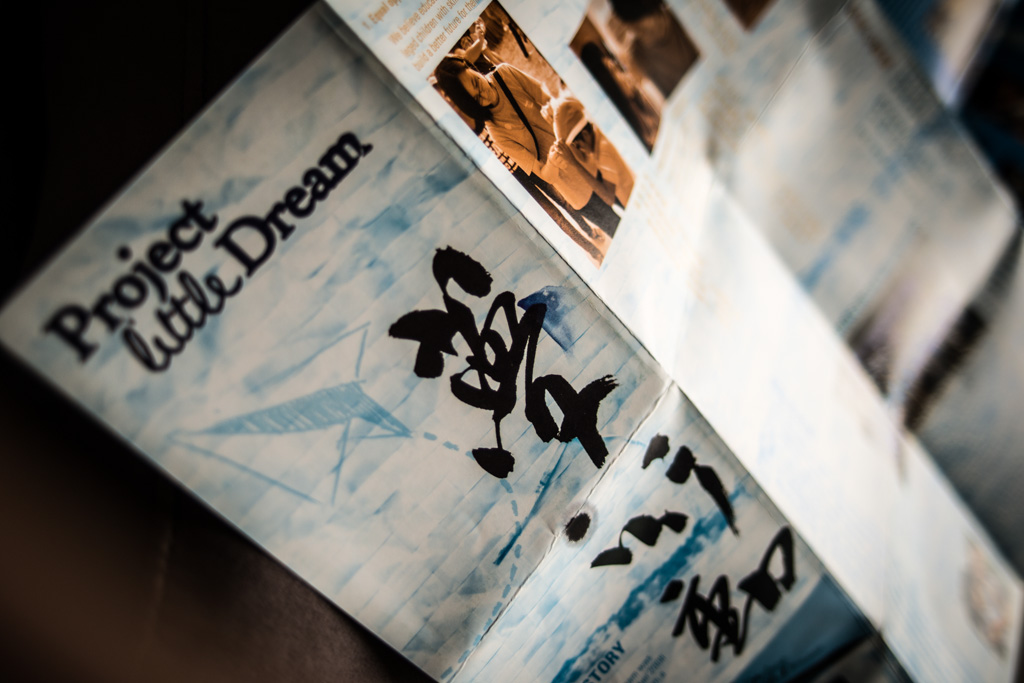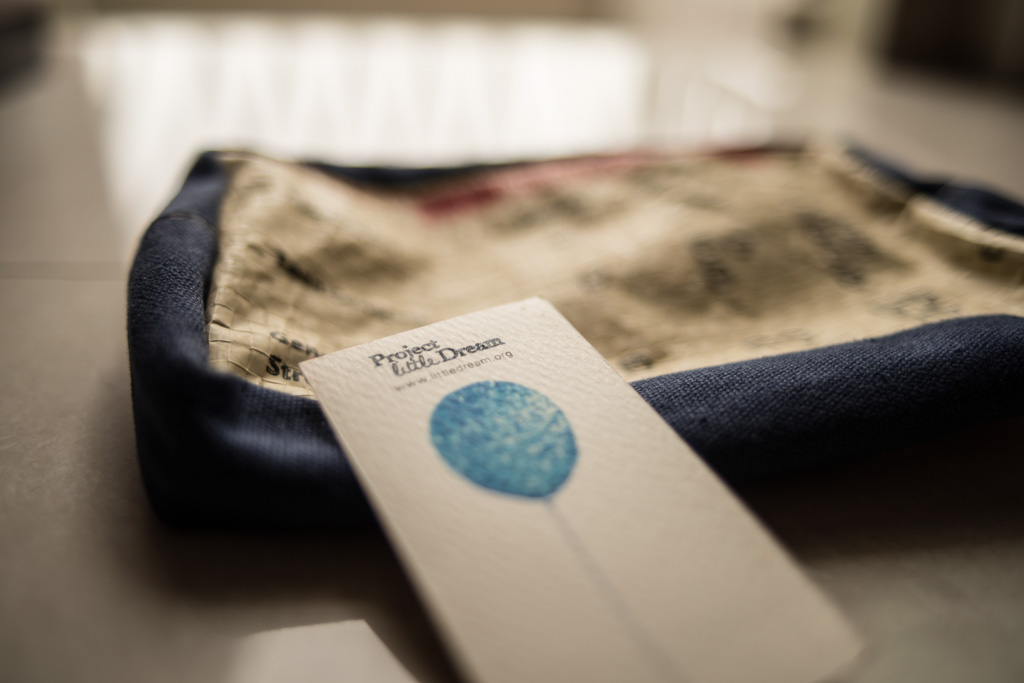Nelson uses bamboo, timber and bricks to build traditional Khmer houses in rural Cambodia. These houses are built on wood columns to protect them from wet ground, wild animals, and human intruders. In the villages of Takeo province in the south of Cambodia where Nelson works as a volunteer architect, he has eaten fried ants, as well as crabs he caught fresh from rivers.
“I like the whole experience. We work, play and eat together. We eat what the locals eat. I don’t just go there to build schools, I also learn and live the local culture and traditions,” he said of his volunteering experience in rural Cambodia where he works with other students from Hong Kong and the local people to provide more education opportunities to village children.
Nelson Huen Ming-yeung is a student of architecture at the Chinese University of Hong Kong. He is in the second year of a master’s degree which is essential for him to become a professional architect. He also works part-time at Oval so we’re colleagues.
Despite his tender age of 21, Nelson has already helped build one community centre and three schools in Cambodia over the past four years. He is very committed to building more rural schools in Cambodia and he visits the country three times a year. He spends his Christmas and New Year holidays, the first half of the summer holidays, as well as early autumn in Cambodian villages where he has projects.
Our first conversation was triggered by an exhibition booklet that I found on my desk. The booklet was produced for an exhibition that looked at 10 long-standing retailers in Sham Shui Po’s shop-houses or Chinese tenement buildings. Specifically, the exhibition explored the relationships between building regulations, design and how people use space. I lent Nelson the booklet, and he explained that he was actually one of the students who helped put together the exhibition yet he had not seen the booklet before.
In the project, Nelson used a combination of photos, text and drawings to document the history, the design as well as the spatial use of a Chinese medical liquor shop that has been doing business on Pei Ho Street since 1961. The shop used to be on Bonham Road in the Mid-Levels before it moved to Sham Shui Po. The family business is now into its third generation.
As we got to know each other better, I realised Nelson works part-time to finance his volunteer commitment with a charity that builds schools in rural Cambodia. “I was a second year undergraduate student when I joined the charity. It was a very exciting experience. Equipped with just one year of architecture education, I went to build a school. I knew nothing, and the goal at the time was the building wouldn't collapse.”
The charity, Project Little Dream, is set up and run by students in Hong Kong universities. It brings architecture and engineering students together to build schools in rural Cambodia. Instead of bringing modern architecture to Cambodia, they learn from local builders and use locally-sourced bamboo and timber to build traditional houses. Therefore they're not only building schools but also helping to preserve Khmer heritage. While the school construction costs are funded by donations, volunteers have to pay for their own air tickets and accommodation in Cambodia.
Apart from budding architects and engineers, Project Little Dream also has volunteers who major in education and healthcare. One problem that the project team has found in rural Cambodia is that most English language teaching materials are donated from the western world and as such the content is alien to children who are growing up in a very different context. Therefore, the education major students are now tailoring an English language learning curriculum that will specifically meet the needs of Cambodian school children. Meanwhile the healthcare majors teach the locals basic medical care.
The project volunteers go to Cambodia every summer during which they would partner with a local non-governmental organisation to identify which village they should go to for the next project. They would then go to the village in October to finalise the project details and construction would take place soon after in December and January.
The first chunk of money that Nelson spent on volunteering came from his parents. The money was returned after he saved enough from working part-time.
“My parents were not impressed. They thought Cambodia has many prostitutes. I kept telling them that is not true. They’re not happy I’m spending Christmas and New Year at home. They want the whole family to be together for the festivals.”
The December just past was the first time in the past four years Nelson stayed in Hong Kong for Christmas. But as soon as the public holidays were over, he packed his bags and dashed off to Cambodia again. By the time you read this story, Nelson will have built his third school, and which is going to be the first two-storey structure the charity has ever built.
The excitement that Nelson gets from being able to actually build something and experiencing a new culture has gradually turned into a yearning for simplicity and a return to the basics. “In Cambodia, I’ve learnt to slow down. I can’t rush. No one can rush. There is no electricity. So when the sun falls, we have to stop working. We start at dawn and stop at five.”
He also recalled that on his first visit to rural Cambodia, there was no Wi-Fi in the town where he stayed. “It was cool, I was cut off from Hong Kong completely. I could be very focused and I could concentrate on my work very well.”
Nelson and his peers from the charity stay at the same guesthouse every time they visit Cambodia. Though the guesthouse has air conditioning, the volunteers went for the basic option of a fan; they want their experience to be as close to how the locals live as possible. Because school-building in rural Cambodia is not a one-way charity effort, the young people from Hong Kong believe that they're also learning from those who receive their help.
Q: What do you like the most about Hong Kong?
A: The energy and the competitive spirit of the place.
Q: What do you dislike the most about Hong Kong?
A: The poor quality of our public space. Hong Kong is densely built so our homes are small. Well, small homes don’t necessarily mean a low quality of living if there’s inviting public space where we can go to enjoy and relax, yet our streets and parks are restrictive. We’re not encouraged to spend time in and enjoy public spaces.
Q: What does Hong Kong have to do to be sustainable?
A: We deserve more parks and public spaces that we can enjoy and relax in. This is very important to Hong Kong in the long run. Hong Kong people travel and we know how well other places are doing, say the Scandinavian cities or Taiwan. Many young people will leave Hong Kong for a higher quality of living elsewhere. This is why we always hear some people say they want to move to Taiwan.






